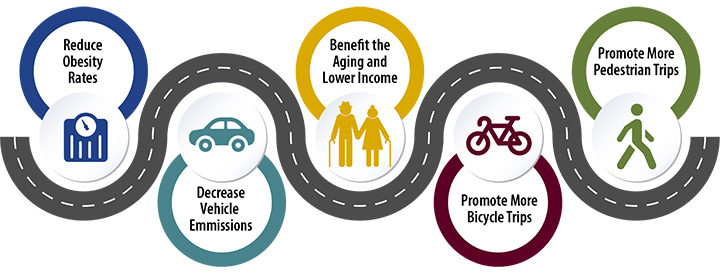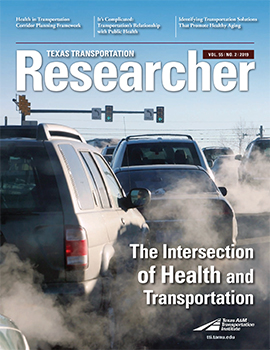Why and when should transportation agencies try to address health concerns?
“The simple answer is because transportation decisions can impact health in the community. Considering these impacts early, as decisions are made, supports better outcomes.”
— Federal Highway Administration
In 2016, the Federal Highway Administration (FHWA) published the Health in Transportation Corridor Planning Framework, a tool for transportation practitioners at the state, regional and local levels who conduct or participate in corridor studies. Five transportation agencies across the country completed pilot testing of the tool in Phase 1 of the project. The Texas A&M Transportation Institute (TTI) and Alta Planning+Design are part of the ICF-led team conducting Phase 2, which is enhancing the framework. The Houston District of the Texas Department of Transportation (TxDOT) is one of six additional agencies FHWA selected to continue implementation testing.

“One of TTI’s roles is to assist the district in using the framework for the plan covering the I-10 West corridor between Beltway 8 and I-610 in Houston,” says TTI Associate Research Scientist Ipek Nese Sener, one of the project’s technical leads and TTI’s principal investigator. “The plan focuses on improving safety, mobility and accessibility along the corridor. For instance, we’re examining areas where pedestrian crossing facilities might benefit aging and lower-income populations needing to access businesses on the south side of the freeway.”
The framework is intended to be used within the corridor planning process. Six steps are outlined, each containing
- questions to consider,
- suggested partnerships and stakeholders,
- data and analytical support suggestions,
- resources, and
- examples from practice.
Since transportation planning at the corridor level is flexible and adaptable to many different issues and contexts, the framework is scalable to any type of corridor. It can be used at a single point in the process or to inform every aspect of a corridor planning study. It can also inform planning activities at both the regional and project level to support broad health goals.
In Houston, for example, the tool has helped identify a wide range of potential health impacts, including reducing obesity rates and decreasing vehicle emissions from idling vehicles by converting school drop-offs by car to pedestrian/bicycle trips. Using the tool has also increased understanding of the potential applications and the limitations of incorporating health in the transportation corridor planning framework.
“The technical assistance from TTI has facilitated implementation of the framework by introducing evidence-based research to promote knowledge transfer while, at the same time, allowing flexibility to garner local opportunities and partnerships,” explains Ana Ramirez Huerta, transportation planner for the TxDOT Houston District.
Health issues, goals and priorities are context dependent, and the framework does not provide specific answers or outcomes. It identifies topics for consideration, as well as data, tools and resources that may prove helpful during the evaluation process. Recognizing that health professionals are highly useful partners, agencies can initiate specific types of coordination and input if and when beneficial.
“The framework has been tested in several communities, and other supporting efforts have been developed to advance understanding of multimodal connectivity and tools,” explains Beverly Bowen, the ICF project manager. “Now, transportation agencies can point to ways in which they consider health during corridor and subarea planning.”
Sener notes the progress made over the years in this research area by expanding the understanding and knowledge of health and transportation, emphasizing the importance of data-driven approaches and the role of emerging technologies.
“Health and transportation are naturally bound together,” Sener says. “An important next step for future research is to assess the additional pilots and make adjustments to resources, data and tools as needed — a challenging and exciting road ahead, but we’re in a great position with the support from local, state and federal agencies.”

